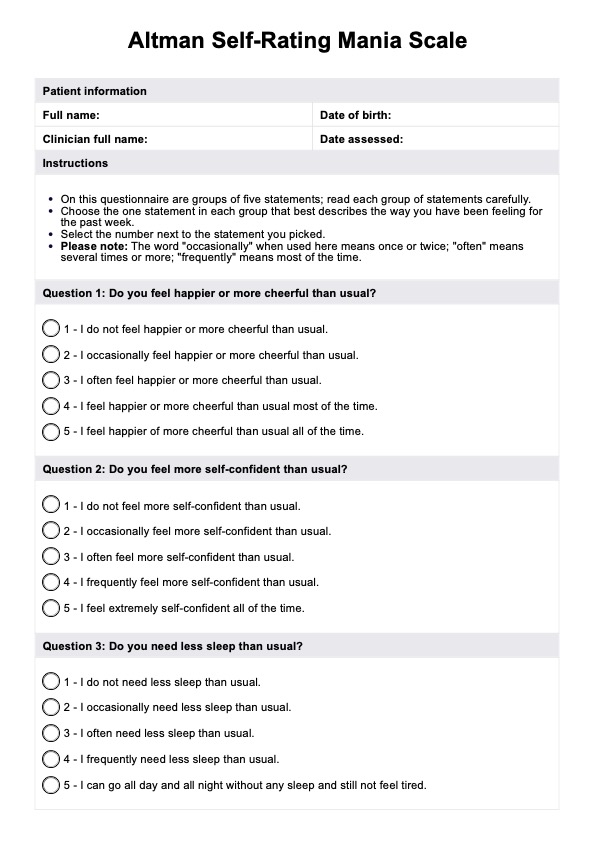The scale only has five items, so it’s possible to complete it in two minutes.

Altman Self-rating Mania Scale
Use the Altman Self-rating Mania Scale to gauge the severity of a patient’s mania symptoms.
Altman Self-rating Mania Scale Template
Commonly asked questions
No. There are only five items, and the person answering the test only needs to pick one out of five preset answers per item.
No. It’s best to use other assessments so you can cover enough ground and then cross-check all the results and information gathered from conversing with patients with the criteria for Mania found in The Diagnostic and Statistical Manual of Mental Disorders. If you’re a non-professional, it’s best to see a professional so they can assess you further because this scale is not enough on its own to determine if you have Mania or not.
EHR and practice management software
Get started for free
*No credit card required
Free
$0/usd
Unlimited clients
Telehealth
1GB of storage
Client portal text
Automated billing and online payments











